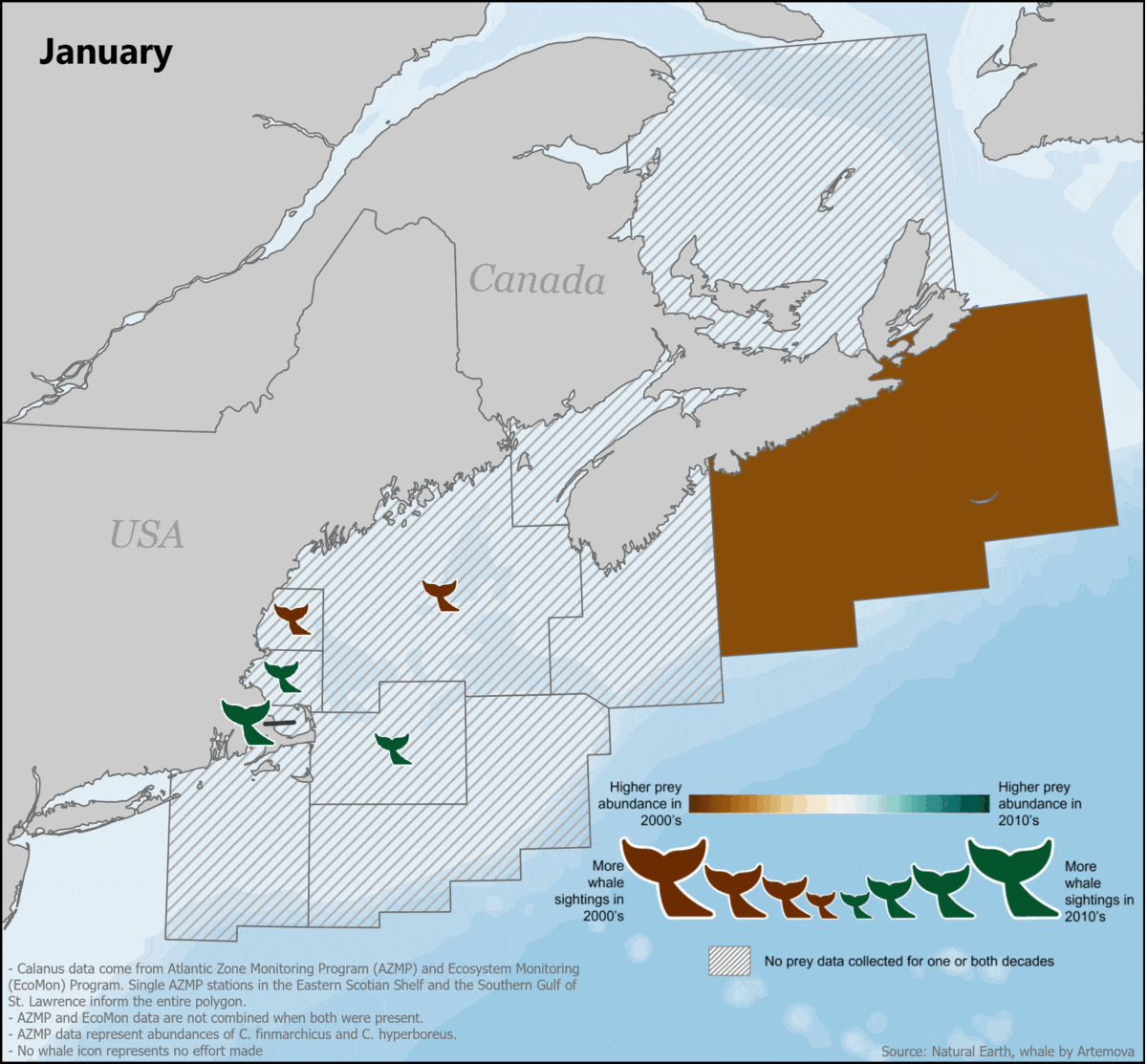New Research is Redefining How North Atlantic Right Whales Use Habitats in a Changing Ocean

A new study published in the journal Limnology and Oceanography takes the first step in redefining North Atlantic right whale distribution patterns and reproductive potential in the face of a changing ocean.
With fewer than 350 right whales remaining, including less than 100 breeding females, preserving every individual is crucial to the species’ survival. While previous work looked at the impacts of environmental conditions on right whales and their exposure to ship strikes and fishing gear entanglements in particular places, this effort took a big picture view – examining areas critical for right whale foraging, breeding, and transiting across their entire range, which extends from the Canadian waters of the Gulf of St. Lawrence to subtropical waters off the coast of Florida.
“Our analysis allowed us to connect changing habitat use by right whales in one region with changes occurring in another,” said Dr. Erin Meyer-Gutbrod, one of the lead authors of the study and assistant professor at University of South Carolina. “In a nutshell, when ocean conditions drive low prey abundance, right whales must search for better foraging habitats. This can cause the whales to go to new places or use their old habitats during seasons we don’t expect them to be there. Our work can help managers overlap protections in space and time with shifting right whale distributions.”
Right Whale Habitat Use Changed Significantly Over the Last Three Decades
In the study, right whale sightings from 1990 – 2018 were analyzed to understand decadal patterns in right whale distribution in 12 high-use areas. The research team also examined abundances of the right whales’ main prey, the tiny planktonic organisms Calanus finmarchicus and C. hyperboreus, during the same period. Compared to the 2000s, the 1990s and 2010s were similar in that prey abundance was low. This corresponded with reduced use of the Southeast U.S. calving grounds in the winter, increased use of Cape Cod Bay in winter and spring, and reduced use of Roseway Basin in the fall off the southwestern coast of Nova Scotia.
The 2010s stand out because right whales began appearing in the Gulf of St. Lawrence, a phenomenon that had not been observed before. While some of this may be due to a lack of survey effort in the area during previous decades, data suggest it is likely because of rapid warming that began in the Gulf of Maine around 2010, reflecting the emergence of climate change as a major driver of ocean conditions in the region. Based on the team’s earlier research, the whales likely came to the Gulf of St. Lawrence in search of food, where they lacked any protections from ship strikes and fishing gear entanglement. This culminated in a mortality event in 2017 where 17 right whales – 12 in Canadian waters and five in U.S. waters – perished, causing a major blow to the population.
“Our research demonstrates a new pattern of right whale habitat use is emerging,” remarked Dr. Kimberley Davies, another of the study’s lead authors from the University of New Brunswick. “The whales will show up in new and old places alike, possibly at different times. This calls on U.S. and Canadian managers, scientists, and stakeholders to coordinate even more closely on the timing and implementation of strong protective measures.”
Looking to the Future
Right whales are highly mobile and responsive to changes in foraging conditions. According to the study, increased use of the Gulf of St. Lawrence in the 2010s, for example, appears to have been driven more by the decline in prey in historic feeding habitats than by an increase in prey in the new one. If that or any new area is to serve as a foraging refuge, it’s critical to understand the area’s suitability for supporting the dietary needs of the species – particularly reproductive females. Expanding monitoring and predictive modeling will enable scientists to continue resolving seasonal shifts in habitat use across the whales’ range and provide the basis for management measures that keep pace with the rate of change.
“Oceanographic conditions driven by climate change are only going to exacerbate the challenges right whales face,” said Dr. Charles Greene, the study’s senior author from Cornell University. “Projections of C. finmarchicus, their preferred food, indicate this zooplankton species will likely shift its distribution poleward in the coming decades. The whales will need time to acclimate to a changing environment. What we must do now is eliminate ship strikes and fishing gear entanglements in both the U.S. and Canada and cut emissions as rapidly as possible.”



